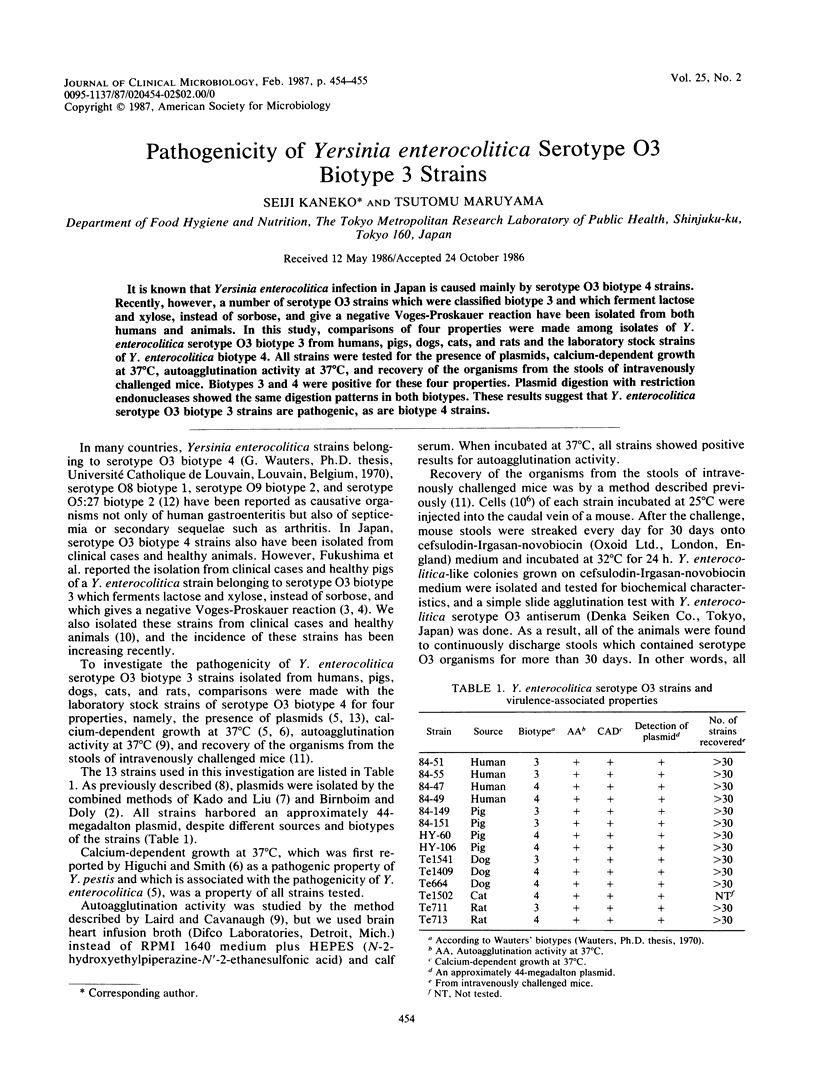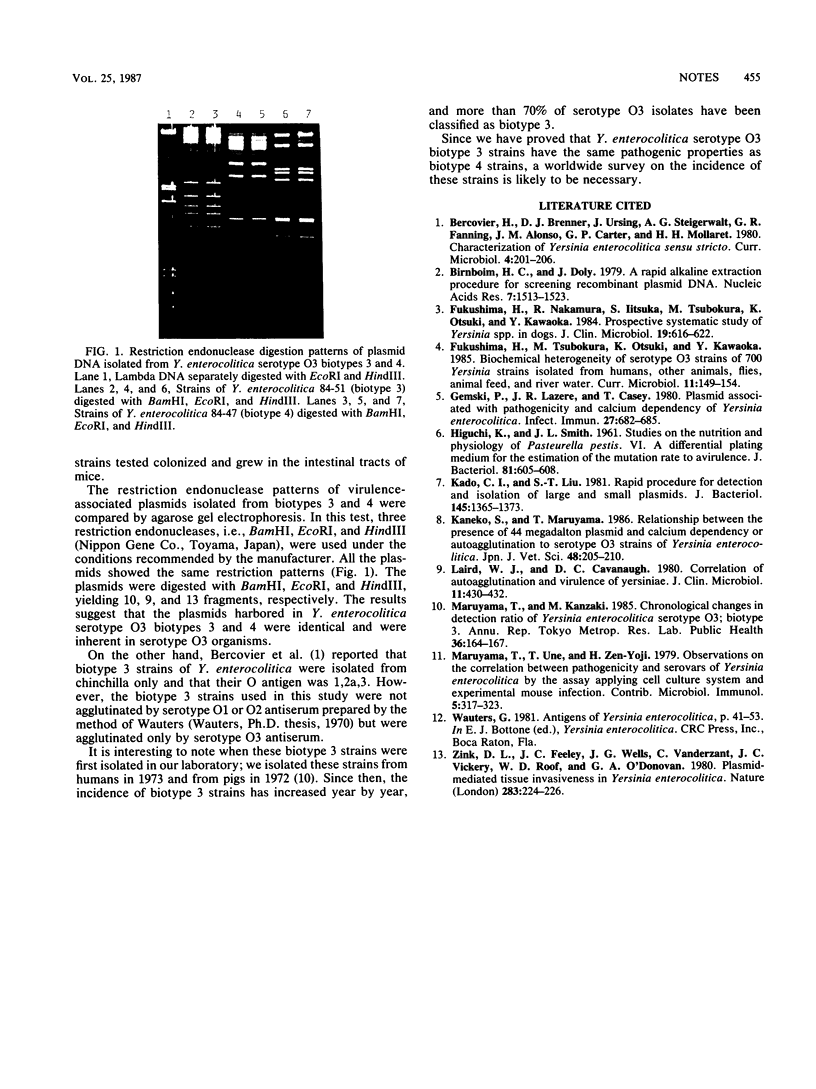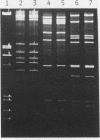Abstract
It is known that Yersinia enterocolitica infection in Japan is caused mainly by serotype O3 biotype 4 strains. Recently, however, a number of serotype O3 strains which were classified biotype 3 and which ferment lactose and xylose, instead of sorbose, and give a negative Voges-Proskauer reaction have been isolated from both humans and animals. In this study, comparisons of four properties were made among isolates of Y. enterocolitica serotype O3 biotype 3 from humans, pigs, dogs, cats, and rats and the laboratory stock strains of Y. enterocolitica biotype 4. All strains were tested for the presence of plasmids, calcium-dependent growth at 37 degrees C, autoagglutination activity at 37 degrees C, and recovery of the organisms from the stools of intravenously challenged mice. Biotypes 3 and 4 were positive for these four properties. Plasmid digestion with restriction endonucleases showed the same digestion patterns in both biotypes. These results suggest that Y. enterocolitica serotype O3 biotype 3 strains are pathogenic, as are biotype 4 strains.
Full text
PDF

Images in this article
Selected References
These references are in PubMed. This may not be the complete list of references from this article.
- Birnboim H. C., Doly J. A rapid alkaline extraction procedure for screening recombinant plasmid DNA. Nucleic Acids Res. 1979 Nov 24;7(6):1513–1523. doi: 10.1093/nar/7.6.1513. [DOI] [PMC free article] [PubMed] [Google Scholar]
- Fukushima H., Nakamura R., Iitsuka S., Tsubokura M., Otsuki K., Kawaoka Y. Prospective systematic study of Yersinia spp. in dogs. J Clin Microbiol. 1984 May;19(5):616–622. doi: 10.1128/jcm.19.5.616-622.1984. [DOI] [PMC free article] [PubMed] [Google Scholar]
- Gemski P., Lazere J. R., Casey T. Plasmid associated with pathogenicity and calcium dependency of Yersinia enterocolitica. Infect Immun. 1980 Feb;27(2):682–685. doi: 10.1128/iai.27.2.682-685.1980. [DOI] [PMC free article] [PubMed] [Google Scholar]
- HIGUCHI K., SMITH J. L. Studies on the nutrition and physiology of Pasteurella pestis. VI. A differential plating medium for the estimation of the mutation rate to avirulence. J Bacteriol. 1961 Apr;81:605–608. doi: 10.1128/jb.81.4.605-608.1961. [DOI] [PMC free article] [PubMed] [Google Scholar]
- Kado C. I., Liu S. T. Rapid procedure for detection and isolation of large and small plasmids. J Bacteriol. 1981 Mar;145(3):1365–1373. doi: 10.1128/jb.145.3.1365-1373.1981. [DOI] [PMC free article] [PubMed] [Google Scholar]
- Kaneko S., Maruyama T. Relationship between the presence of 44 megadalton plasmid and calcium dependency or autoagglutination to serotype O3 strains of Yersinia enterocolitica. Nihon Juigaku Zasshi. 1986 Apr;48(2):205–210. doi: 10.1292/jvms1939.48.205. [DOI] [PubMed] [Google Scholar]
- Laird W. J., Cavanaugh D. C. Correlation of autoagglutination and virulence of yersiniae. J Clin Microbiol. 1980 Apr;11(4):430–432. doi: 10.1128/jcm.11.4.430-432.1980. [DOI] [PMC free article] [PubMed] [Google Scholar]
- Maruyama T., Une T., Zen-Yoji H. Observations on the correlation between pathogenicity and serovars of Yersinia enterocolitica by the assay applying cell culture system and experimental mouse infection. Contrib Microbiol Immunol. 1979;5:317–323. [PubMed] [Google Scholar]
- Zink D. L., Feeley J. C., Wells J. G., Vanderzant C., Vickery J. C., Roof W. D., O'Donovan G. A. Plasmid-mediated tissue invasiveness in Yersinia enterocolitica. Nature. 1980 Jan 10;283(5743):224–226. doi: 10.1038/283224a0. [DOI] [PubMed] [Google Scholar]



